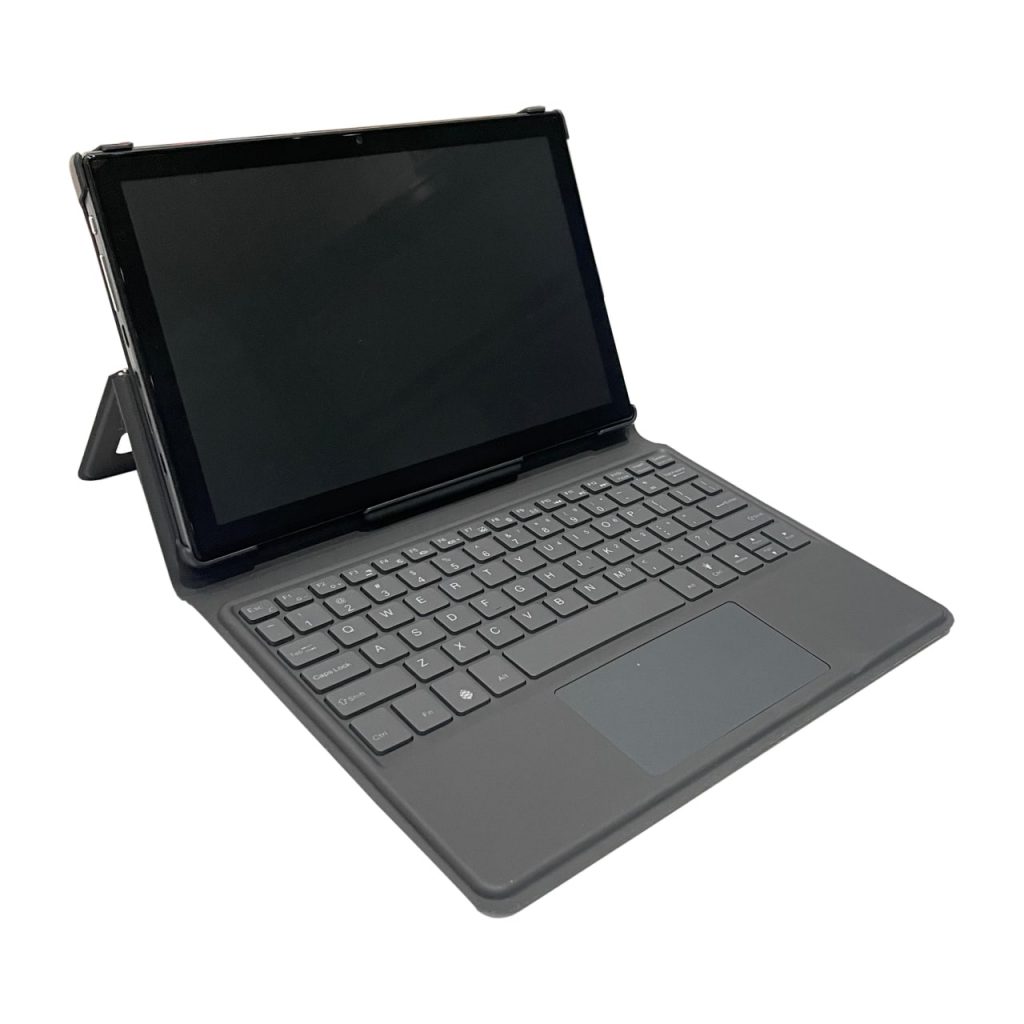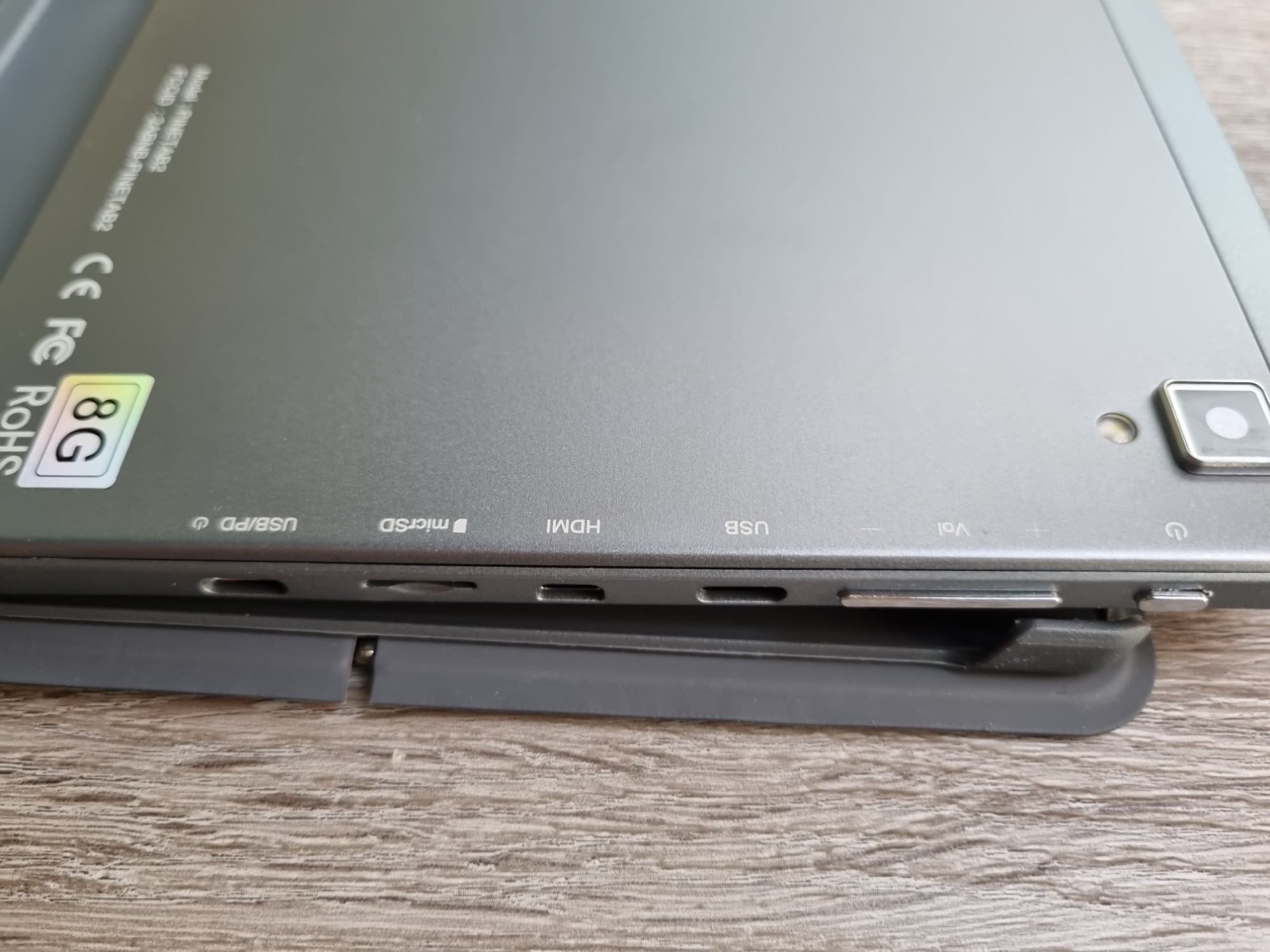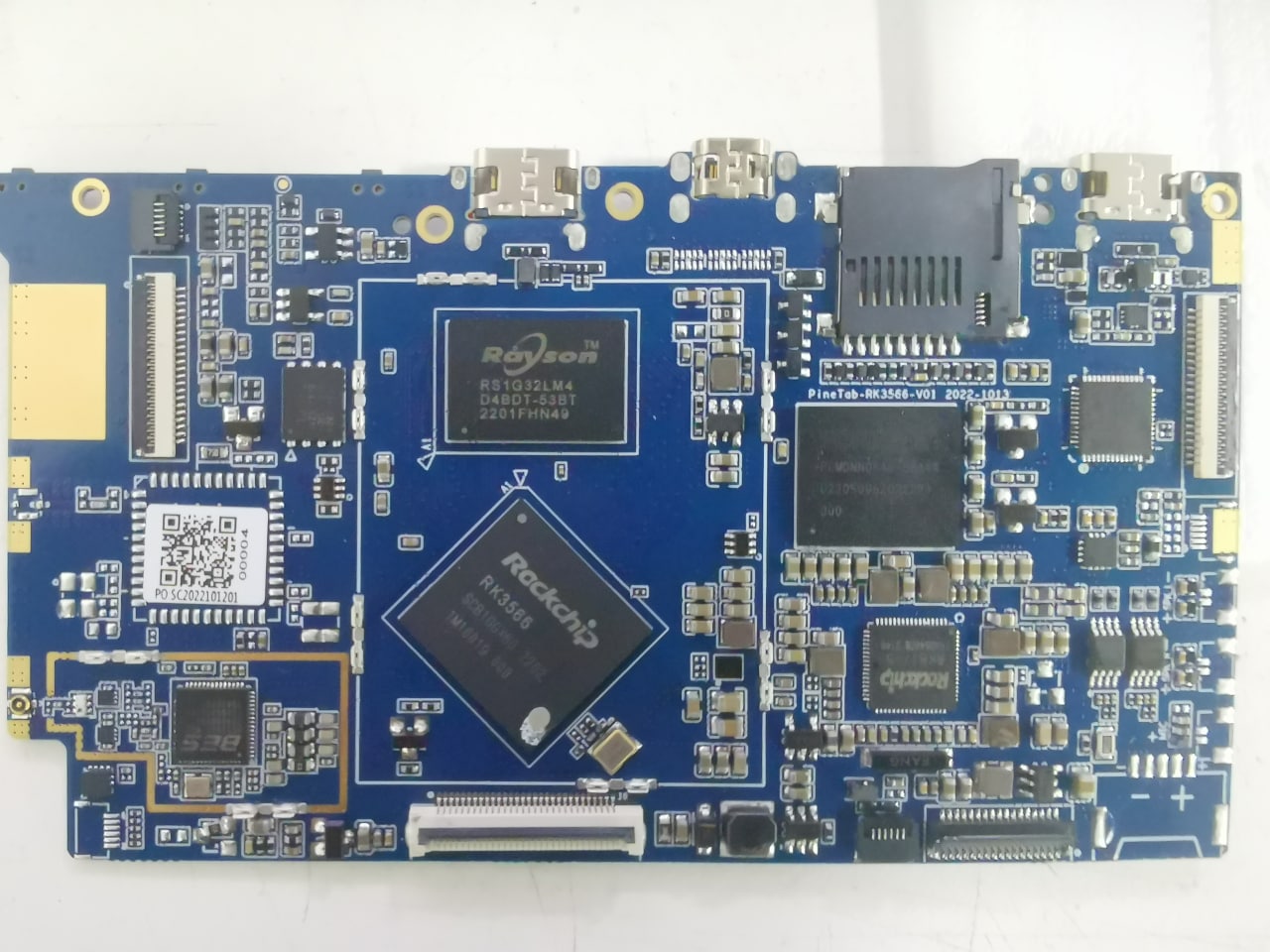Difference between revisions of "PineTab2"
Surehand53 (talk | contribs) m (→Getting started: added punctuation) |
Surehand53 (talk | contribs) (→Keyboard cover: no main ToC entry needed. Moved to “getting started”) |
||
| Line 54: | Line 54: | ||
'''Something is not working?''' Please join the [[Main_Page#Chat_Platforms|PineTab channel in the community chat]], the community is always happy to help. In the section [[#Connecting the UART adapter]] you can find information about how to connect the USB UART adapter and how to retrieve the boot logs if the device is not booting properly even after the above linked procedure. | '''Something is not working?''' Please join the [[Main_Page#Chat_Platforms|PineTab channel in the community chat]], the community is always happy to help. In the section [[#Connecting the UART adapter]] you can find information about how to connect the USB UART adapter and how to retrieve the boot logs if the device is not booting properly even after the above linked procedure. | ||
== Specifications == | == Specifications == | ||
Revision as of 09:28, 19 July 2023
The PineTab2 is PINE64's successor to the original PineTab Linux tablet computer, featuring a faster processor and better availability. The tablet is available in two configurations, 4GB of RAM and 64GB of internal storage or 8GB of RAM and 128GB of internal storage. The tablet ships with a detachable keyboard that doubles as a protective cover.
The tablet is designed around the Rockchip RK3566 processor, which features 4 energy-efficient Cortex-A55 64-bit ARM cores and enjoys good mainline Linux support. Similarly packaged RISC-V tablet is PineTab-V.
Pre-orders started on the 13th of April 2023, with pricing starting at USD 159 for the 4GB/64GB version and USD 209 for the 8GB/128GB version. The PineTab2 began shipping on June 2, 2023.
Getting started
The PineTab2 box contains two smaller boxes.
The first package includes:
- the PineTab2,
- a short user guide,
- a power cable and
- the UART adapter. Note that the UART adapter is in the same package as the power cable in a second compartment and can be a bit hidden, search for it.
The second box has the keyboard in it.
First start
The PineTab2 can be started by pressing and holding the power button for two seconds. The device is initialized at the first boot and will power-cycle while the partition table is populated.
The PineTab2 ships with DanctNix Arch Linux and comes with a pre-set user and the default password 123456.
| Default credentials | |
|---|---|
| Default user | alarm / 123456
|
You can create a new user and set your own password after the initial boot. To do so, go to system settings -> users and create a new profile using your preferred name and password.
Software
All operating systems for the PineTab2 are delivered by community developers and partner projects. Aside from the operating system that comes pre-installed on your device, you can install and run any other operating system available for the PineTab2. Most, if not all operating systems for the PineTab2 are open and free, such as Linux and BSD.
Since most software issues will be release-specific, please see the PineTab2 Releases page for additional software related instructions, tips, and tricks.
Software Releases
- The PineTab2 ships with Danctnix Arch Linux ARM. The factory image can be found here:
- https://echo.danctnix.org:7269/danctnix-factory-image-20230527.img.xz (1.5 GB)
- Note: The factory image is flashed to a microSD card and it will overwrite the eMMC installation after booting.
- All other releases for the PineTab2 will be listed under PineTab2 Releases as they're released. Your contributions are wanted!
Installation instructions
The PineTab2 is capable of running different operating systems from the internal flash memory (eMMC) and from microSD card. Please see the Installation Instructions for detailed instructions. Please also note the info under the boot priority entry when booting from microSD card.
Something is not working? Please join the PineTab channel in the community chat, the community is always happy to help. In the section #Connecting the UART adapter you can find information about how to connect the USB UART adapter and how to retrieve the boot logs if the device is not booting properly even after the above linked procedure.
Specifications
- SoC: Rockchip RK3566
- CPU: 4x ARM Cortex-A55 @ 1.8 GHz
- 32KB L1 Instruction Cache and 32KB L1 Data Cache per core
- 512KB unified system L3 cache
- ARMv8 Cryptography Extensions
- GPU: Mali-G52 MP2 @ 800 MHz
- Supported by the open source 'Panfrost' driver in Linux and Mesa
- Supports OpenGL 3.1 and OpenGL ES 3.1 with many newer extensions
- NPU: 0.8 TOPS Neural Processing Unit
- RAM: 4GB or 8GB LPDDR4
- Storage:
- 64GB or 128GB internal eMMC (SiliconGo SGM8 100C-S36BCG; eMMC 5.1, up o 400MB/s)
- 1x MicroSD slot
- Display: 10.1" IPS LCD Resolution 1280x800
- Cameras:
- Front: 2Mpx, chipset: Galaxycore GC02M2
- Rear: 5Mpx, chipset: Omnivision OV5648
- Battery: 6000 mAh (22.2Wh)
- Buttons: Power, volume up, volume down
- Network:
- Wi-Fi
- Bluetooth
- I/O:
- 1x USB-C 3.0 (top, host mode only; power output up to 680mA)
- 1x USB-C 2.0 + PD (bottom, device mode by default; power input)
- 1x MicroHDMI
- 1x 4 pole 3.5mm audio jack (microphone right) and headphone detection
- 2x speakers + microphone (microphone left)
- 1x 5 pin (USB 2.0; <=680mA) Pogo connector for keyboard
- (PCIe on PCB as a flat flex ribbon connector, no room for M.2 NVMe drives in case)
- Sensors:
- Accelerometer
- Ambient Light & Proximity Sensor
- Multimedia:
- rkdjpeg: 1080p120 JPEG decode
- no driver in mainline yet
- hantro: JPEG/VP8/H.264 encode, 1080p MPEG-2/H.263/VP8/H.264 AVC decode
- mainline driver does not yet support all codecs/functions
- see Mainline Hardware Decoding and Mainline Hardware Encoding
- rkvdec2: 4K H.264 AVC Main10 L5.1/H.265 HEVC Main10 L5.1/VP9 Profile 0 and 2 L5.1 decode
- no driver in mainline yet
- rkvenc2: 4K H.264 AVC/H.265 HEVC encode
- no driver in mainline yet
- rkdjpeg: 1080p120 JPEG decode
- Build: Metal and Plastic
- Dimensions: 242x161x9mm
- Weight: 538g
- Misc:
- Protective cover with keyboard
Development efforts
Main Article: Quartz64 Development
Linux mainline is already quite far along for the device, as the SoC is the same as is used in the Quartz64 line of devices. Some minor pinetab2-specific adjustments can be found here Check the main article for the big picture; PineTab2 specific issues are listed here.
Known Issues
- The display panel driver is in PineTab2's kernel fork, and needs to be submitted to upstream.
- The BES2600 Wi-Fi driver needs major cleanup and bugfixing (at the moment it often causes system crashes). This is a priority, but for now, you can USB tether a phone or use a supported WI-FI dongle.
- The BES2600 Bluetooth driver needs to be implemented.
- The Camera drivers needs to be ported (gc02m2, ov5648), Rockchip CSI/ISP driver needs to be extended to handle 2 lanes.
- Suspend does not currently work reliably due to a driver issue. It is therefore disabled in the factory image. Caveat Emptor if you chose to unmask the feature prior to it being fixed.
Connecting the UART adapter
The USB-C UART adapter can be connected to the PineTab2 to debug boot issues at the early boot:
- Plug the adapter face-up in the USB-C port furthest away from the power button. If all the lights are lit, you have the wrong port: only the green light should be lit when you first plug it in.
- Plug USB-C cable into the port on the adapter marked "DEBUG"
- Open a terminal window
- Install minicom or screen via your distribution's package manager, if you don't have it installed already
- Connect via minicom using
sudo minicom -D /dev/ttyUSB0 -b 1500000or via screen usingsudo screen /dev/ttyUSB0 1500000- Ubuntu-based distro users may encounter the error, "cannot open /dev/ttyUSB0: No such file or directory". If this occurs, check the output of
sudo dmesg --followand unplug/replug the USB to look for any errors. If you see an error like, "usb 1-1: usbfs: interface 0 claimed by ch341 while 'brltty' sets config #1", then the brltty service is likely conflicting with this device. Brltty provides access to blind users who use a braille display: if you do not need this service, try disabling it using these commands:sudo systemctl stop brltty-udev.servicesudo systemctl mask brltty-udev.servicesudo systemctl stop brltty.servicesudo systemctl mask brltty.service
- Ubuntu-based distro users may encounter the error, "cannot open /dev/ttyUSB0: No such file or directory". If this occurs, check the output of
Board information, schematics and certifications
PineTab2 mainboard schematic:
PineTab2 certifications:
Datasheets for Components and Peripherals
Rockchip RK3566 SoC information:
Tutorials and Frequently Asked Questions
Please see the PineTab2 FAQ page for tutorials and frequently asked questions.


